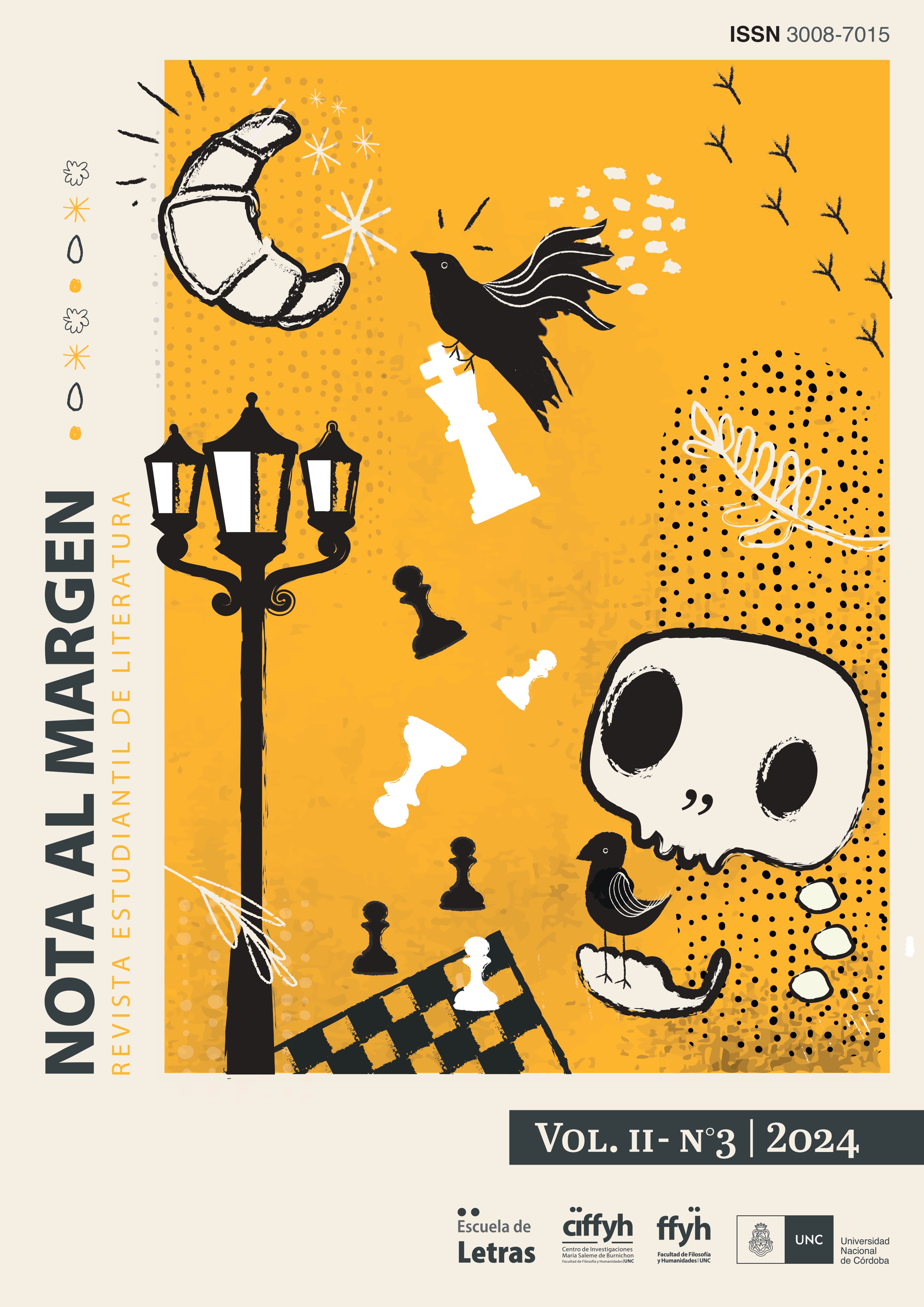The Freudian Ominous in Jorge Luis Borges. An Analysis of the Text The Book of Sand
Keywords:
Ominous, Freud, Borges, The Sand BookAbstract
Freud, in 1919, wrote The Ominous as part of his theoretical, epistemological and ontological turn, that took shape in 1920 with Beyond the Pleasure Principle. In these texts, the author abandons the hypothesis that the human psychic apparatus is directed by the principle of pleasure-displeasure and enunciates the death drive, together with the repetition compulsion. The Ominous is that which was condemned to disappear under the rule of repression, but emerges as an unknown in the familiar. This appearance generates, in most cases, a feeling of terror before something that is unknown and traumatizes the soul. This text, together with Duel and Melancholy, were the prelude to the theoretical postulates of late Freud.
The relationship between Borges and psychoanalysis is a well-known subject of study, since the writer took some psychological elements to carry out several of his stories, essays and books. In this article, we intend to glimpse and analyze the presence of The Ominous in The Sand Book, to deepen the study of this relationship and open future questions on psychoanalysis and literature.
Downloads
References
Borges, J. L. (1998). El libro de arena. Alianza Editorial, S.A.
Freud, S. (1995 [1920]). Más allá del principio del placer (Vol. XVIII, pp. 4-62). Amorrortu ediciones.
Freud, S. (1996a [1914-1916]). Introducción al Narcisismo (Vol. XIV). Amorrortu ediciones.
Freud, S. (1996b [1919]). Lo Ominoso. En Obras Completas (Vol. XVII, pp. 216-251). Amorrortu ediciones.
Freud, S. (2010 [1900]). La interpretación de los sueños (Vol. IV y V). Amorrortu ediciones.
Luján Martínez, H. (2010). “Lo ominoso” en la ética como construcción literaria de sí mismo. (Sobre Borges y Cortázar en torno de la noción de “figuras éticas”). En Actapoética, 31 (2), pp. 211-245. http://www.scielo.org.mx/scielo.php?script=sci_arttext&pid=S0185-30822010000200009&lng=es&tlng=es.
Minhot, L. (2017). La matriz disciplinar kuhniana y nuevamente el viejo problema de la cientificidad del psicoanálisis. En Vasconcelos Ribeiro, C. (Comp.), Kuhn e as Ciências Humanas (pp. 238-255). DWW editorial.
Moyano, M. I. (2020). Las pasiones del doble: Borges y Foucault. Material de cátedra del curso de posgrado “Las pasiones del doble: Borges y Foucault” (Módulos 1, 2 y 3). Universidad Católica de Córdoba.
Pillonetto, I. (22 de noviembre de 2020). ‘El libro de arena’, de Jorge Luis Borges. La Milana Bonita. https://lamilanabonita.com/2020/11/22/el-libro-de-arena-de-jorge-luis-borges/#:~:text=El%20libro%20de%20arena%20se,%2C%20incomprensible%2C%20m%C3%A1gico%20y%20terrenal
Rodríguez Benítez, A. (2020). Sobre las múltiples interpretaciones de “lo ominoso” en Sigmund Freud: reseña al libro «On Freud's “The Uncanny”». En Dialektika: Revista De Investigación Filosófica Y Teoría Social, 3 (6), pp. 59-62. https://journal.dialektika.org/ojs/index.php/logos/article/view/45
Vara Miranda, E. A. (2020). La identidad imposible: algunos apuntes sobre ‘el doble’ en Borges y en el psicoanálisis. En Psicología Iberoamericana, 28 (2). https://www.redalyc.org/journal/1339/133964928005/133964928005.pdf
Zanchettin, J. F. (2013). El horror en Freud. En Memorias de las Jornadas de Investigación (1), pp. 708-710. https://ri.conicet.gov.ar/handle/11336/24796
Published
How to Cite
Issue
Section
License
Copyright (c) 2024 Santiago Marghetti

This work is licensed under a Creative Commons Attribution-NonCommercial 4.0 International License.
Usted es libre de:
Compartir — copiar y redistribuir el material en cualquier medio o formato.
Adaptar — remezclar, transformar y contruir a partir del material.
La licenciante no puede revocar estas libertades en tanto usted siga los términos de licencia
Bajo los siguientes términos:
Atribución — Usted debe dar crédito de manera adecuada,
brindar un enlace a la licencia, e indicar si se han realizado cambios.
NoComercial — Usted no puede hacer uso
del material con propósitos comerciales.









